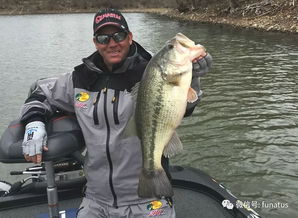Content:
Introduction: Crazy fishing, a popular pastime that combines the thrill of fishing with the challenge of catching unique species, has gained immense popularity in recent years. Among the many exciting fish to target, lobsters have become a favorite among anglers. This article will delve into the world of crazy fishing and provide you with essential techniques to master the art of catching lobsters.
Understanding Lobster Behavior: Before diving into the fishing techniques, it's crucial to understand the behavior of lobsters. Lobsters are nocturnal creatures, meaning they are most active during the night. They prefer cool, well-oxygenated waters and are often found in rocky, muddy, or sandy bottoms. Knowing their habits will help you choose the right spots and timing for your fishing adventure.
Selecting the Right Equipment: To catch lobsters, you'll need specialized equipment. Here are some essential items to consider:
a. Lobster Pot: A lobster pot, also known as a trap, is a crucial tool for catching lobsters. These pots are designed to trap lobsters while allowing other marine life to pass through. Choose a pot that is large enough to accommodate the size of the lobsters you're targeting.
b. Line and Rigs: Use a strong, durable line to connect your lobster pot to the boat or shore. Additionally, rig your line with a sinker to keep the pot at the desired depth. A leader line connected to the pot's entrance can help prevent unwanted fish from entering.
c. Bait: Lobsters are attracted to a variety of baits, including fish, crabs, and shellfish. Choose fresh, natural baits to increase your chances of success.
Choosing the Right Location: To find the best spots for catching lobsters, consider the following factors:
a. Depth: Lobsters are often found at depths ranging from 10 to 100 feet. Use a depth finder to locate areas with suitable depths for lobster populations.
b. Structure: Lobsters prefer areas with structure, such as rocks, reefs, or artificial structures like shipwrecks. These areas provide hiding spots and protection from predators.
c. Tides: Lobsters are more active during low tide, as they search for food. Plan your fishing trips accordingly to increase your chances of success.
Setting Up the Lobster Pot: Once you've found a suitable location, it's time to set up your lobster pot. Follow these steps:
a. Attach the sinker to the line and lower the pot to the desired depth.

b. Position the pot in an area with structure, such as a rock or reef.
c. Attach the leader line to the pot's entrance and secure it to the main line. This will prevent unwanted fish from entering the pot.
d. Place your bait inside the pot, ensuring it is accessible to the lobsters.
Patience and Persistence: Catching lobsters requires patience and persistence. Lobsters are cautious creatures, and it may take some time to catch one. Here are a few tips to help you stay focused:
a. Stay put: Once you've set up your lobster pot, remain in the area for an extended period. Lobsters may take time to approach the pot.
b. Adjust your bait: If you're not catching any lobsters, try changing your bait or adjusting the pot's position.
c. Be prepared: Have the necessary tools and equipment ready, such as gloves, a net, and a cooler to store your catch.
Conclusion: Crazy fishing for lobsters can be an exhilarating and rewarding experience. By understanding lobster behavior, selecting the right equipment, choosing the perfect location, and being patient, you'll increase your chances of success. So, grab your gear, head to the water, and embrace the thrill of catching these magnificent creatures. Happy fishing!












